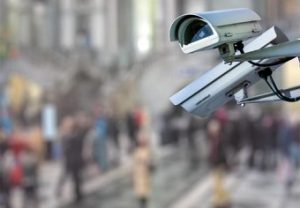
With each passing year, security technologies and video surveillance solutions, in particular, seem to evolve at an ever-increasing rate. While discussions around the IP tipping point and mass market adoption of high-resolution cameras were still prevalent just a few years ago, the industry has now moved on to how things, such as artificial intelligence (AI), will transform video surveillance moving forward.
Seeking to shed light on this and other factors that could shape the video market moving forward, IHS Markit released its annual white paper outlining the top trends its’ analysts believe will significantly influence the industry in 2018. Among the major trends to watch, according to the white paper, include:
1. AI and Deep Learning
Driven by the research-and-development investment from chip vendors, software startups and major video surveillance vendors, deep learning video analytic algorithms have been developed into fully deployable products, with user-friendly interfaces and scenario-focused solutions. For example, deep learning face-recognition algorithms are now available in search-engine applications designed to find missing people from video footage. Vendors that market vertically-focused deep learning applications aligned with their own existing portfolios should have good opportunities to grow.
2. Privacy and GDPR
In 2018, there will be an increase in the wider discussion about privacy and how the video surveillance industry protects the data it gathers. Much of this discussion will stem from the new European Union (EU) General Data Protection Regulation (GDPR) which will become law across EU member states (including the UK) in May 2018. GDPR will replace each EU member state’s own version of data protection law and is likely to increase public awareness about the rights ordinary citizens have regarding their own personal data protection. With a wide-ranging scope covering many industries, GDPR also has specific coverage for video surveillance data.
3.China Versus the Rest of the World
China is forecast to account for almost half (46 percent) of global professional video surveillance equipment revenue in 2018. However, the Chinese market has some unique characteristics that differ from other regional markets. Essentially, there are two markets for video surveillance equipment: the Chinese market and the rest of the world.
4. Drone Detection Technologies
Consumer drones are readily available for just a couple of hundred dollars and can be flown by anyone, with no prior training and without a license. Thus, the problem of drones in restricted airspace has become an increasing concern. Given the large physical area these restricted airspaces cover, simply being able to identify a nearby drone has proven challenging. Recent developments in drone detection technology mean that anyone wanting to secure a perimeter in 2018 will have to take into account the threat from above.
5. Video Surveillance Fault Tolerance
Compared to the IT industry, the video surveillance industry is often viewed as having a relaxed approach to many aspects of failover and redundancy. However, as the multiple uses and perceived value of video surveillance data increases, we can expect to see increased demands for greater failover, redundancy and backups from end-users.
6. Forensic Video Analytics as a Service
Forensic video analysis has been available for some time, yet the improvement in accuracy provided by deep-learning technology over the past two years has been instrumental in delivering a level of competency reliable enough to assist human analysts. We can expect to see increased convergence in post-recording video repositories, where multiple video sources are brought together and investigated using deep-learning video analytics.











